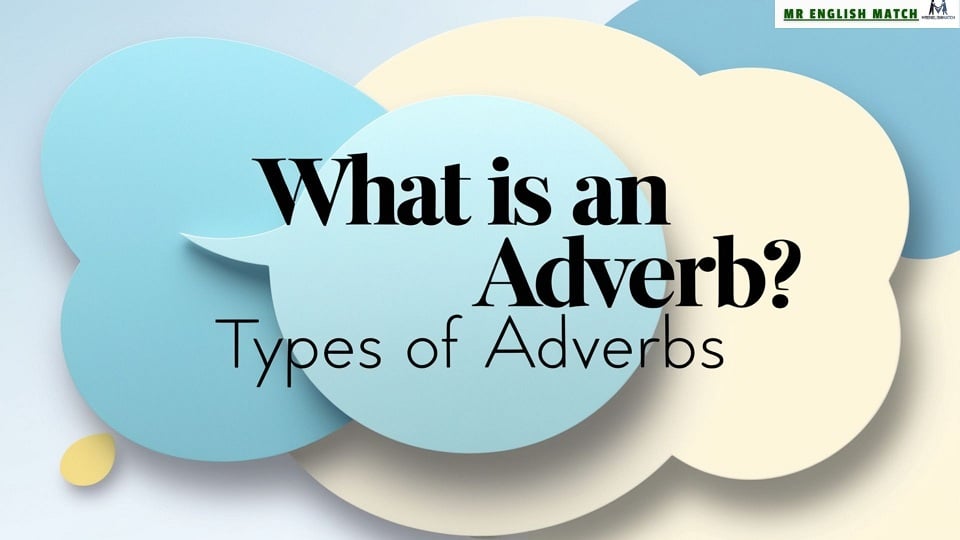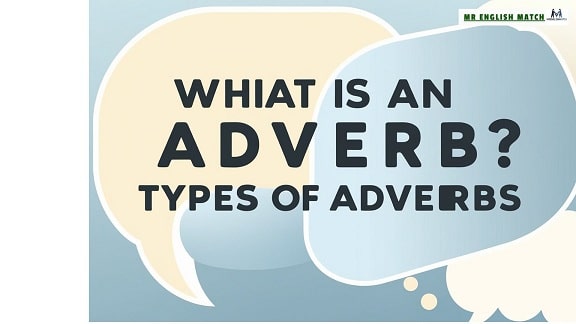Adverbs are one of the most powerful tools in the English language, enriching our speech and writing by modifying verbs, adjectives, and even other adverbs. If you’re curious about what is an adverb and Types of adverbs, you’re in the right place! From words like quickly, softly, and everywhere, these modifiers bring context, clarity, and emphasis to sentences, transforming simple phrases into vivid expressions. But did you know that adverbs come in numerous forms, each with its own function? Understanding these forms can help you speak and write with greater precision and impact.
In this guide, we’ll explore what is an adverb ? Types of adverbs, including adverbs of manner, place, frequency, and time—among others. By breaking down their roles and examples, you’ll gain a better grasp of how they enrich your communication. Whether you’re a student sharpening your grammar skills or a professional seeking to enhance your writing, mastering adverbs will elevate your language skills to new heights. So, let’s dive into the world of adverbs and learn how these essential parts of speech can.
What is an adverb?

An adverb is a word that modifies a verb, adjective, phrase, or even another adverb, adding more detail and depth to a sentence. Adverbs explain how, when, where, or to what extent an action takes place. For example, in the sentence “Robert ran quickly,” the adverb “quickly” describes the speed of Robert’s running. Adverbs like very, often, and softly enrich communication, providing clarity and precision. Understanding how to use adverbs correctly can make your sentences more engaging and impactful.
Types of Adverbs :

- Adverbs of manner
- Adverbs of place
- Adverbs of time
- Adverbs of frequency
- Adverbs of degree
- Adverbs of certainty
- Adverbs of negation
- Adverbs of affirmation
- Adverbs of comparison
- Adverbs of duration
- Adverbs of frequency and repetition
- Adverbs of sequence
what is an adverb ? types of adverbs: definitions and examples

A word that alters a verb, adjective, phrase, or other adverb is called an adverb.There are 12 types of adverbs with their definitions and examples.
Adverbs of Manner
Definition: Adverbs of manner describe how an action is performed.
Adverbs: quickly, slowly, happily, carefully, loudly
Adverb Examples:
- The dog barked loudly when the doorbell rang.
- She spoke carefully to make sure everyone understood.
- He quickly finished his assignment before the deadline.
Adverbs of Place
Definition: Adverbs of place indicate where the action is happening.
Adverbs: here, there, everywhere, inside, outside
Adverb Examples:
- We should meet outside the cafe at noon.
- The children are playing inside due to the rain.
- She placed her keys here on the table.
Adverbs of Time
Definition: Adverbs of time specify when an action takes place.
Adverbs: now, then, soon, later, yesterday
Adverb Examples:
- Let’s discuss the issue later in the meeting.
- They are leaving for vacation soon.
- She called me yesterday to share the news.
Adverbs of Frequency
Definition: Adverbs of frequency indicate how often something happens.
Adverbs: always, often, sometimes, rarely, never
Adverb Examples:
- He rarely goes out during the weekdays.
- She sometimes forgets to bring her lunch.
- They always celebrate holidays together.
Adverbs of Degree
Definition: Adverbs of degree modify the intensity or degree of an action.
Adverbs: very, extremely, quite, too, enough
Adverb Examples:
- The weather was extremely cold yesterday.
- She is quite skilled in her profession.
- The tea was too hot to drink immediately.
Adverbs of Certainty
Definition: Adverbs of certainty express how sure or confident someone is about something.
Adverbs: definitely, certainly, surely, probably, maybe
Adverb Examples:
- He will probably arrive late due to traffic.
- She is surely going to ace the exam.
- They will definitely join us for dinner.
Adverbs of Negation
Definition: Adverbs of negation indicate the absence or denial of an action.
Adverbs: not, never, no, hardly, scarcely
Adverb Examples:
- I have never seen a more beautiful sunset.
- There is no doubt about his honesty.
- She hardly speaks during meetings.
Adverbs of Affirmation
Definition: Adverbs of affirmation confirm or agree with a statement.
Adverbs: yes, certainly, indeed, absolutely, surely
Adverb Examples:
- Yes, I agree with your point.
- He is certainly the best candidate for the job.
- Indeed, it was a memorable experience.
Adverbs of Comparison
Definition: Adverbs of comparison compare the degree or intensity of actions or qualities.
Adverbs: more, less, most, least, equally
Adverb Examples:
- She works more efficiently than her colleagues.
- He was less interested in the lecture than I expected.
- This option is equally viable as the other one.
Adverbs of Duration
Definition: Adverbs of duration indicate how long an action lasts.
Adverbs: briefly, temporarily, permanently, momentarily, constantly
Adverb Examples:
- She worked there temporarily before moving abroad.
- They paused momentarily during the performance.
- He has lived in this house permanently since childhood.
Adverbs of Conjunction
Definition: Adverbs of conjunction connect and show the relationship between two clauses or sentences.
Adverbs: however, nevertheless, meanwhile, therefore, thus
Adverb Examples:
- Nevertheless, they decided to proceed with the plan.
- Meanwhile, the team continued their preparations.
- Thus, we concluded our research successfully.
Adverbs of Sequence
Definition: Adverbs of sequence indicate the order of events.
Adverbs: firstly, secondly, finally, then, next
Adverb Examples:
- Secondly, we need to evaluate the results.
- She added the spices next.
- Finally, they presented their findings to the committee.
example case of personal adverbs

The adverb “personally” carries various nuances in meaning, each enriching communication in distinct ways:
- Expressing an opinion: “Personally, I prefer the second option,” highlights a subjective perspective, making it clear that the viewpoint is individualized.
- Referring to a specific person: “Do you know him personally?” emphasizes a direct, personal acquaintance or experience with the individual in question.
- Responsibility: “You will be held personally responsible for any loss or breakage,” conveys accountability at a deeply individual level, stressing ownership of outcomes.
- Connection to someone’s personal life: “Have you had any contact with any of the suspects, either personally or professionally?” establishes a clear distinction between private and work-related interactions.
- Intended to be offensive: “I’m afraid he took your remarks personally,” reflects the sensitivity or offense perceived in communication, emphasizing
You might like also:
Types of Nouns with Examples and Definitions
Types of Pronouns their Definitions with Examples
Types of Verbs Their Definitions with Examples
Phrasal Verbs With Example Sentences in English Grammar
FAQs about Adverb
(what is an adverb and Types of adverbs)
What is an adverb?
An adverb is a word that modifies verbs, adjectives, or other adverbs, adding details about how, when, where, or to what extent an action is performed.
How do you identify an adverb in a sentence?
Adverbs often end in “-ly” (like quickly or happily) and answer questions such as “How?”, “When?”, “Where?”, and “To what extent?”
What are examples of adverbs of manner?
Adverbs of manner describe how an action is performed, such as carefully, loudly, or slowly. Example: “She spoke softly.”
How do adverbs differ from adjectives?
Adjectives describe or modify nouns and pronouns, while adverbs modify verbs, adjectives, or other adverbs. Example: “He is a quick runner” (adjective) vs. “He runs quickly” (adverb).
What is the function of adverbs of frequency?
Adverbs of frequency indicate how often an action occurs, such as always, never, sometimes, and rarely. Example: “I often exercise in the morning.”
Can an adverb modify an adjective?
Yes, adverbs can modify adjectives to enhance their meaning. Example: “She is extremely happy.” The adverb extremely modifies the adjective happy.
What are some adverbs of time?
Adverbs of time tell us when something happens, such as now, then, soon, yesterday, or later. Example: “I’ll call you later.”
How do adverbs of place function?
Adverbs of place indicate where the action occurs, such as here, there, inside, and everywhere. Example: “The kids are playing outside.”
What is the difference between comparative and superlative adverbs?
Comparative adverbs compare two actions or qualities (e.g., faster, more carefully), while superlative adverbs compare three or more (e.g., fastest, most carefully). Example: “She runs faster than her brother” (comparative).
What does a adverb modify?
An adverb modifies verbs, adjectives, or other adverbs, providing additional details about how, when, where, or to what extent an action is performed. For example, in “She sang beautifully,” the adverb “beautifully” modifies the verb “sang” by describing how she sang. Similarly, in “He is very tall,” the adverb “very” modifies the adjective “tall” to show the degree of height.
Conclusion
Adverbs play a crucial role in enriching the meaning and clarity of language by modifying verbs, adjectives, and even other adverbs. They help us describe actions in more detail, specify the frequency, place, manner, and degree of occurrences, and express certainty or negation with precision. By understanding the what is an adverb and various types of adverbs—such as those of manner, time, and place—we gain the ability to craft sentences that are both engaging and exact. Embracing the full potential of adverbs will undeniably enhance your writing and communication skills.
Sources

John Robert is a seasoned grammar enthusiast and the insightful voice behind MrEnglishMatch. With years of experience in language arts and a passion for clear, effective communication, John’s blog posts blend expertise with approachable advice. His deep understanding of grammar and style helps readers sharpen their writing skills and master the nuances of English. When not blogging, John enjoys exploring new languages and reading classic literature.







